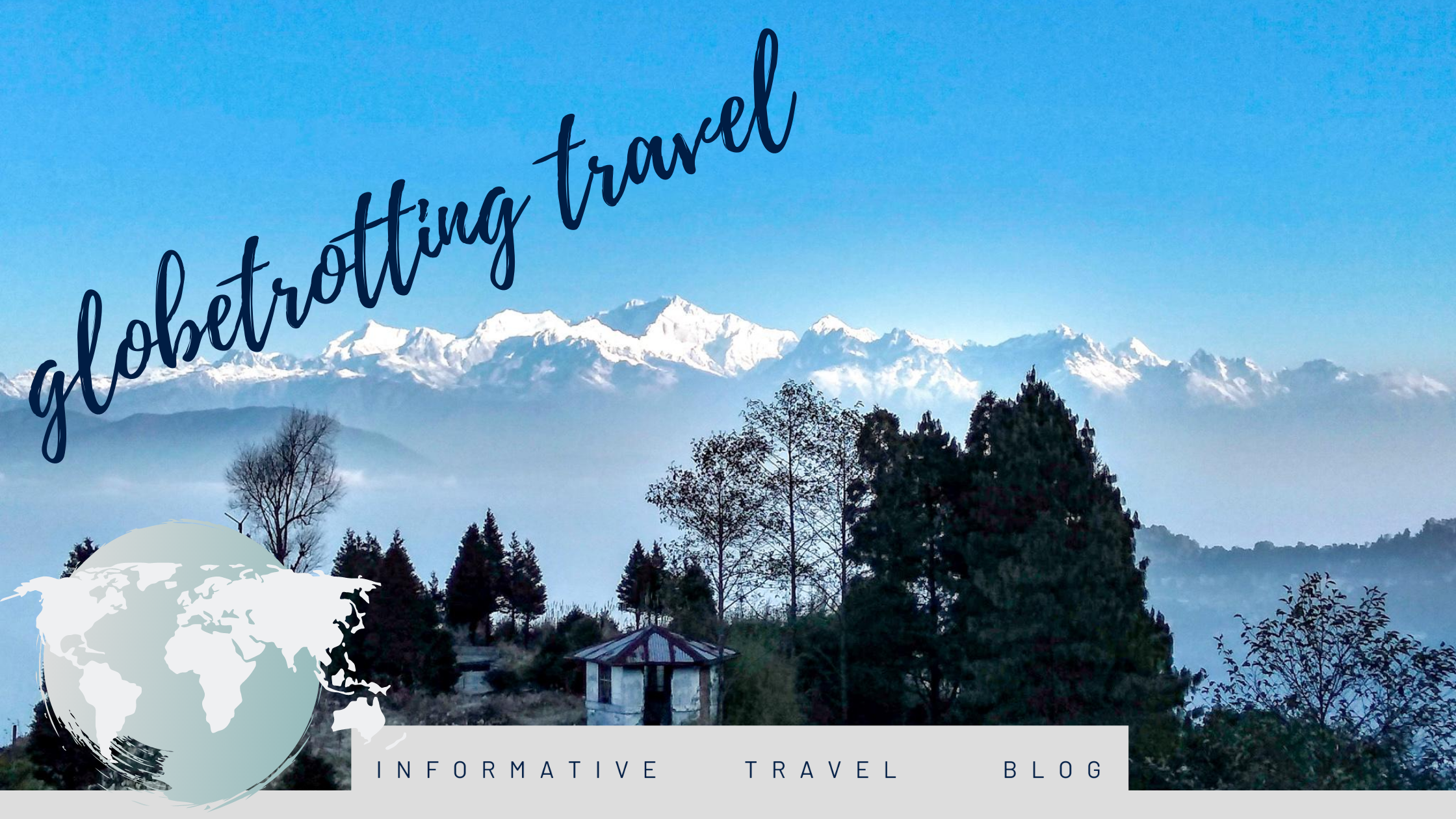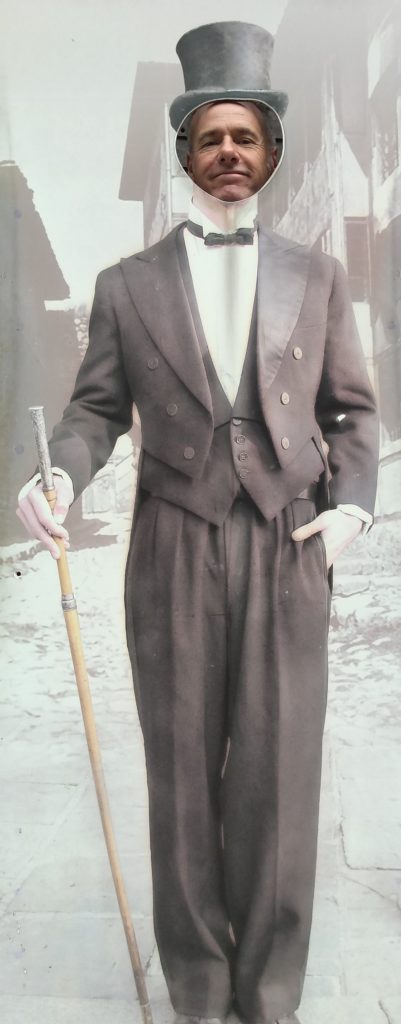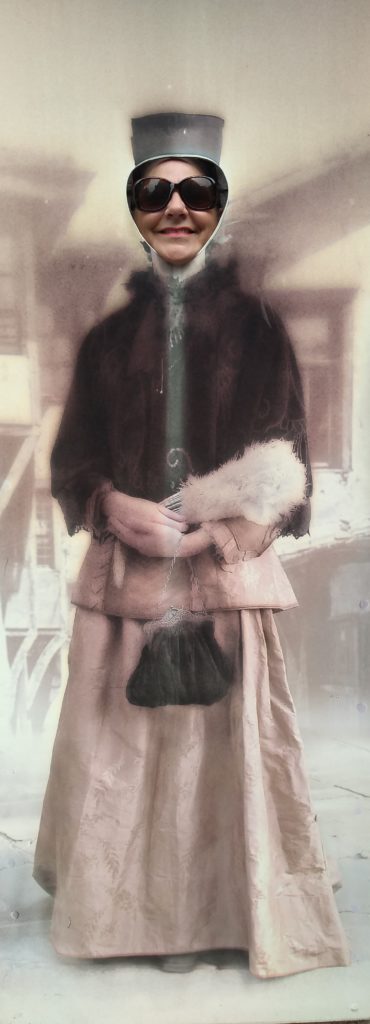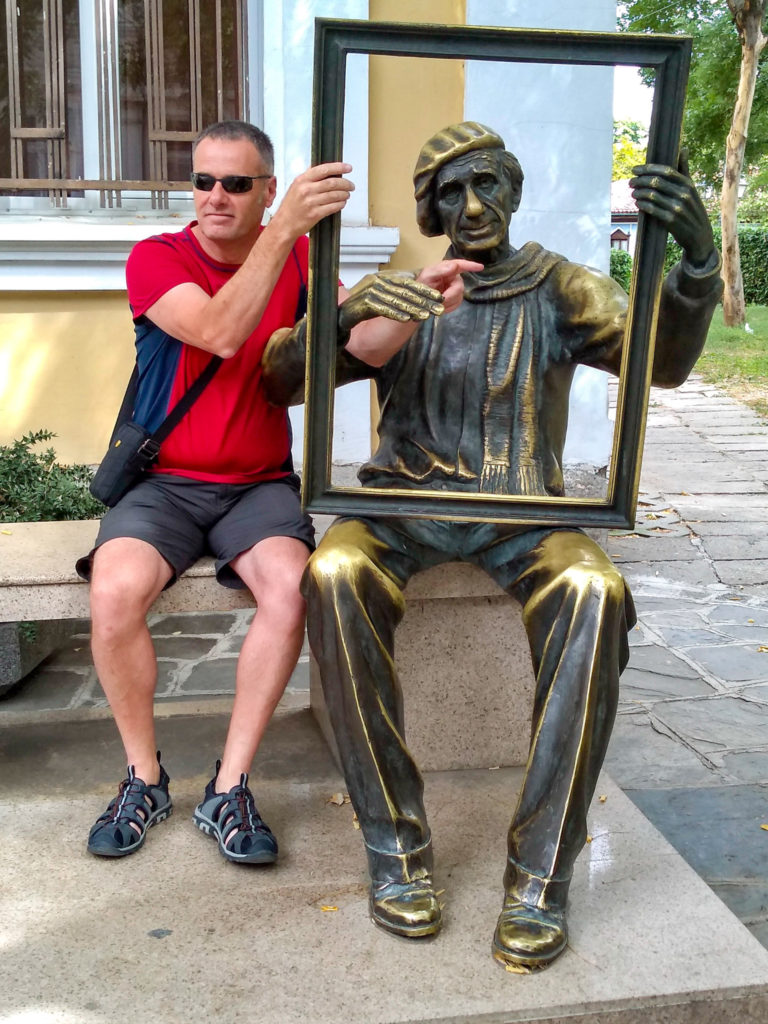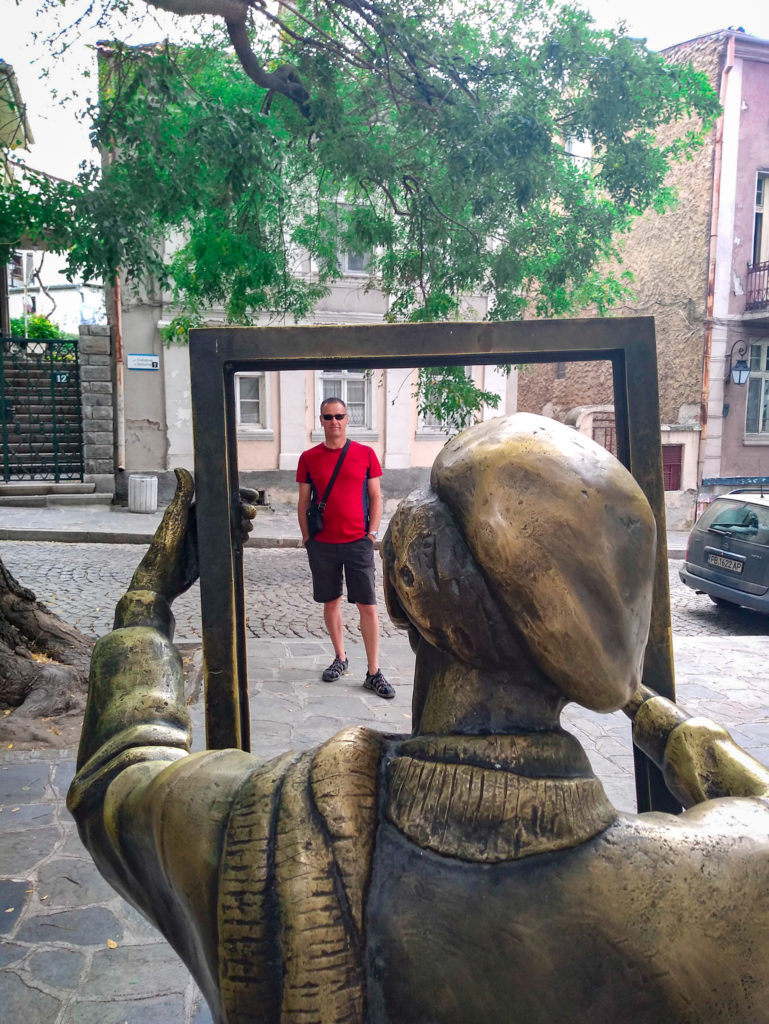”Plovdiv the city of the Seven Hills”.
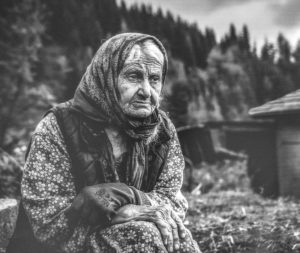
See photos
Where is Plovdiv?
The city of Plovdiv straddles both sides of the Maritsa River. Located in the large plain that lies between the Rhodope Mountains on the south and the Balkan Range that runs through the center of Bulgaria to the north
Far more ancient than even Rome. Plovdiv, steeped with more than 8000 years of history, is Europe’s oldest continuously inhabited city and one of the 5 oldest cities in the world.
Getting there
Our journey from Sofia to Plovdiv was on the train.
Our accommodation
During our time in Plovdiv, we chose to stay at the Airbnb Mousehouse, The Sculpture Studio. A charming room in the bohemian Kapana district of the city, close to the old town.
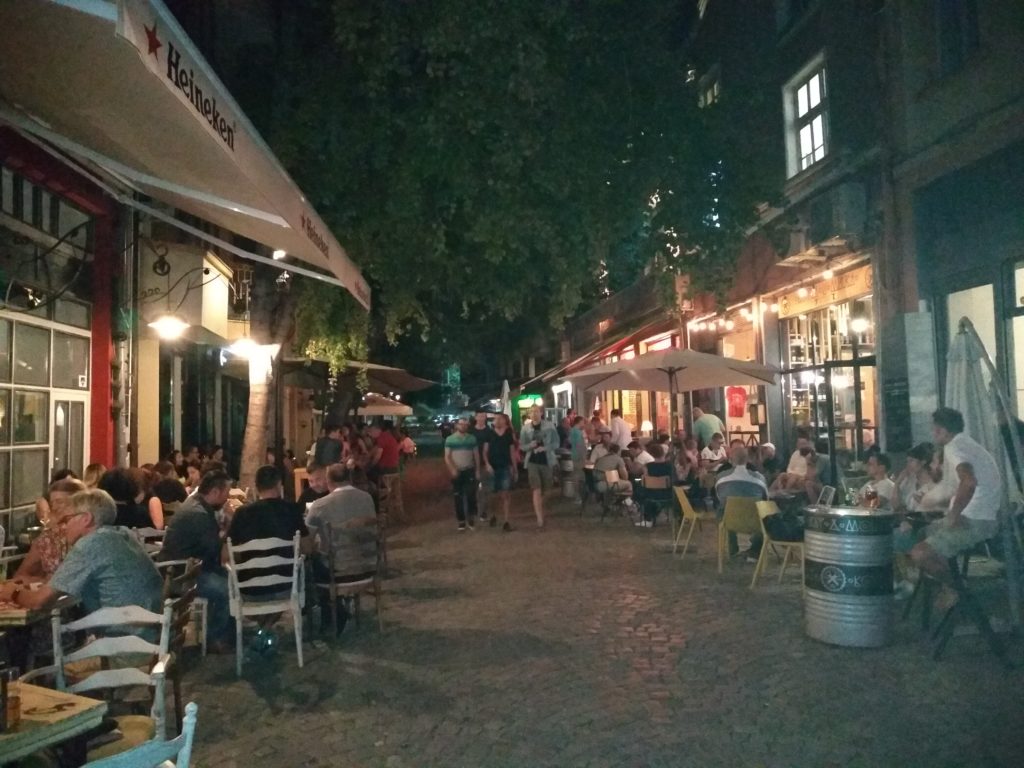
Places of interest
Our sightseeing in Plovdiv commenced with a walk around the old town. Leaving our accommodation we took the short 3 min walk back to the main road of bul. Tsar Boris III Obedinitel, where we crossed the road via the underpass. On the other side, the Old Town, is clearly signposted. Just a short walk up the steps, we entered the Old Town. Wandering through the labyrinth of cobbled streets, we were treated to the cultural and architectural delights the Old Town Plovdiv has to offer. The first and probably the main attraction was-
Roman Amphitheatre (Ancient Theater of Philippopolis)
After a landslide in the early 1970s exposed parts of the buried amphitheatre. A major archeological excavation was undertaken. Removing some 4.5 m of earth that was covering the parts left hidden by the landslide. Restoration of the ancient theatre is recognized as one of the greatest achievements in Bulgarian conservation. Today the theatre is one of the world’s best-preserved ancient theatres and plays a significant part in the cultural life of the city. Serving as a stage for plays, concerts and public events, holding up to 3,500 spectators.
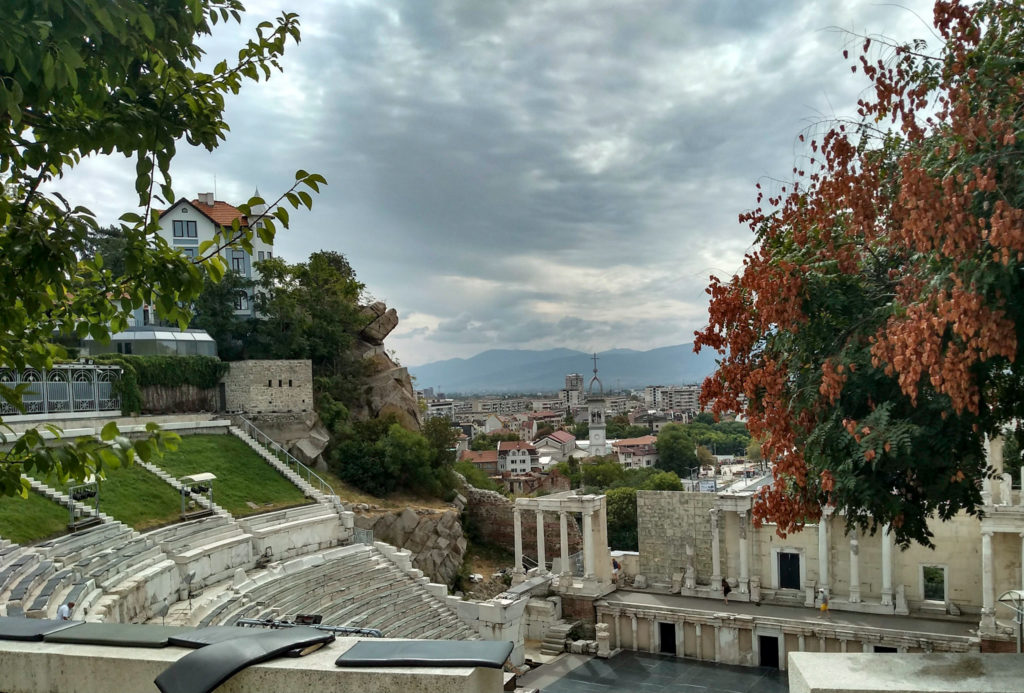
Nebet Tepe
Leaving the spectacular sight of the amphitheatre, we walked through the maze of the Old Town to Nebet Tepe. One of the hills of Plovdiv where the ancient town was founded. There are only the remains of Puldin Fortress walls and towers here now. But standing on them gives a commanding view across the city and Maritsa River.
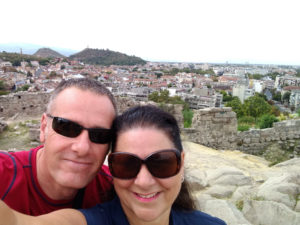
On the walk through the town to Nebet Tepe, we passed many of the lavishly decorated houses, such as- Balabanov House, Danov House, Kuyumdzhioglu House, Hindliyan House and Lamartine House, all beautiful in their own way. Entry into several of these lovely old houses to see the extravagant interiors is permitted.
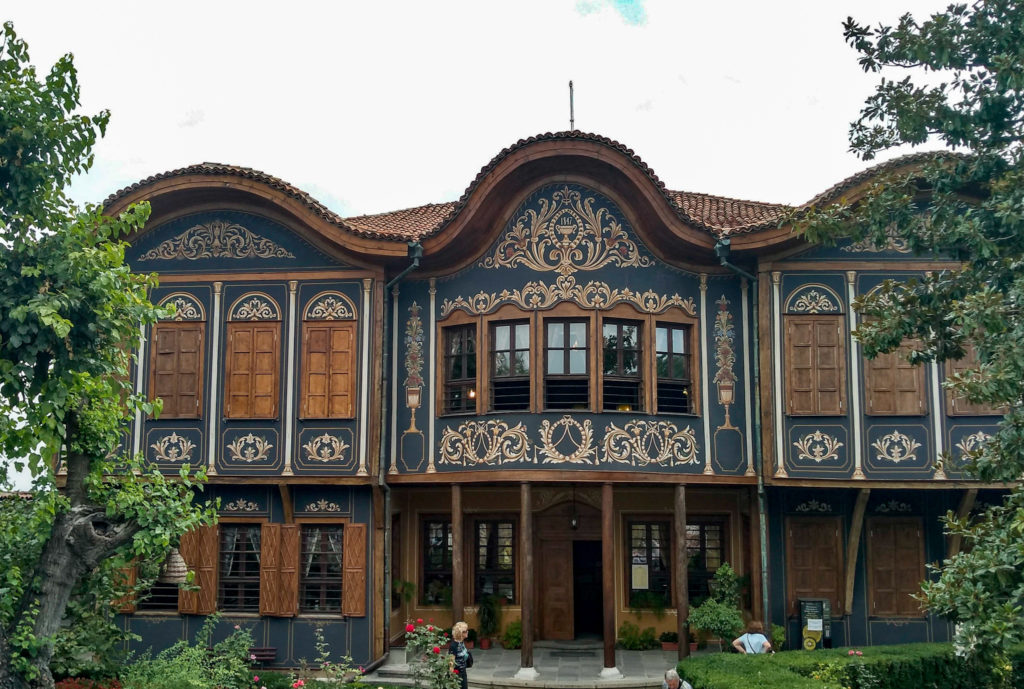
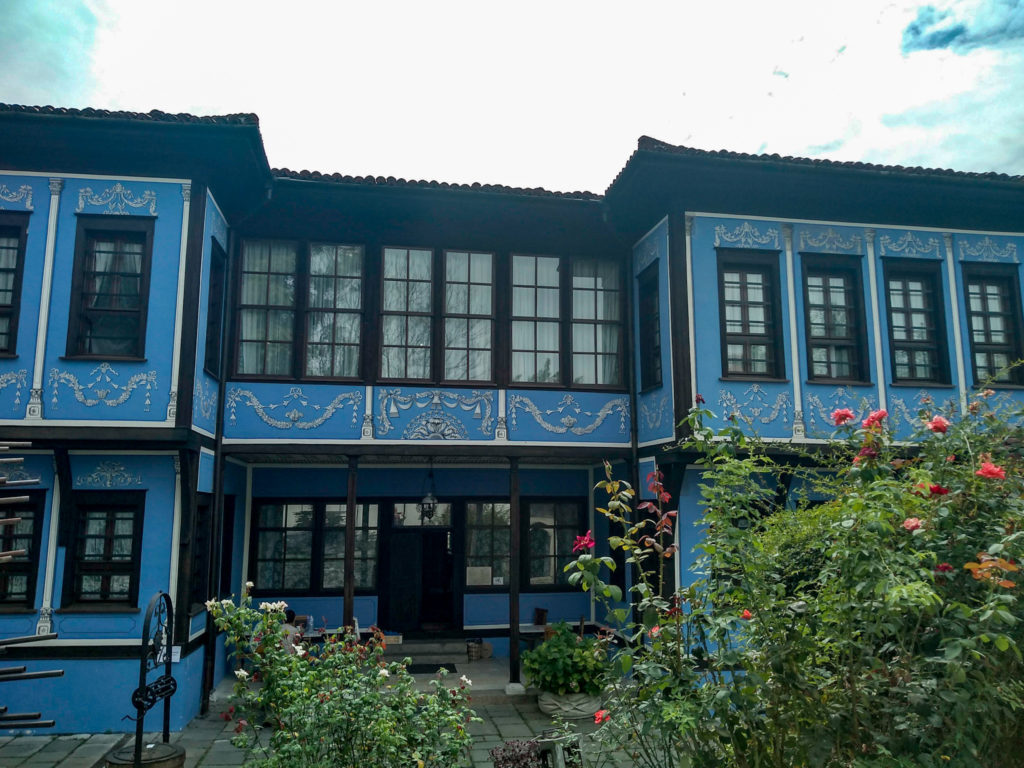
The Street of Crafts
Still in the confines of the Old Town, is the Street of Crafts. Along this street are traditional houses, containing period workshops. Watch through the windows and doorways to see the skilled craftspersons creating wonderful ceramics, pottery, glass engraving, painting and weaving. The crafts all being available for purchase.
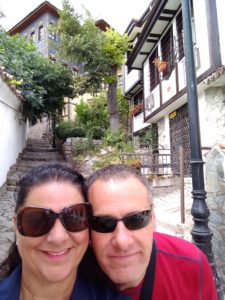
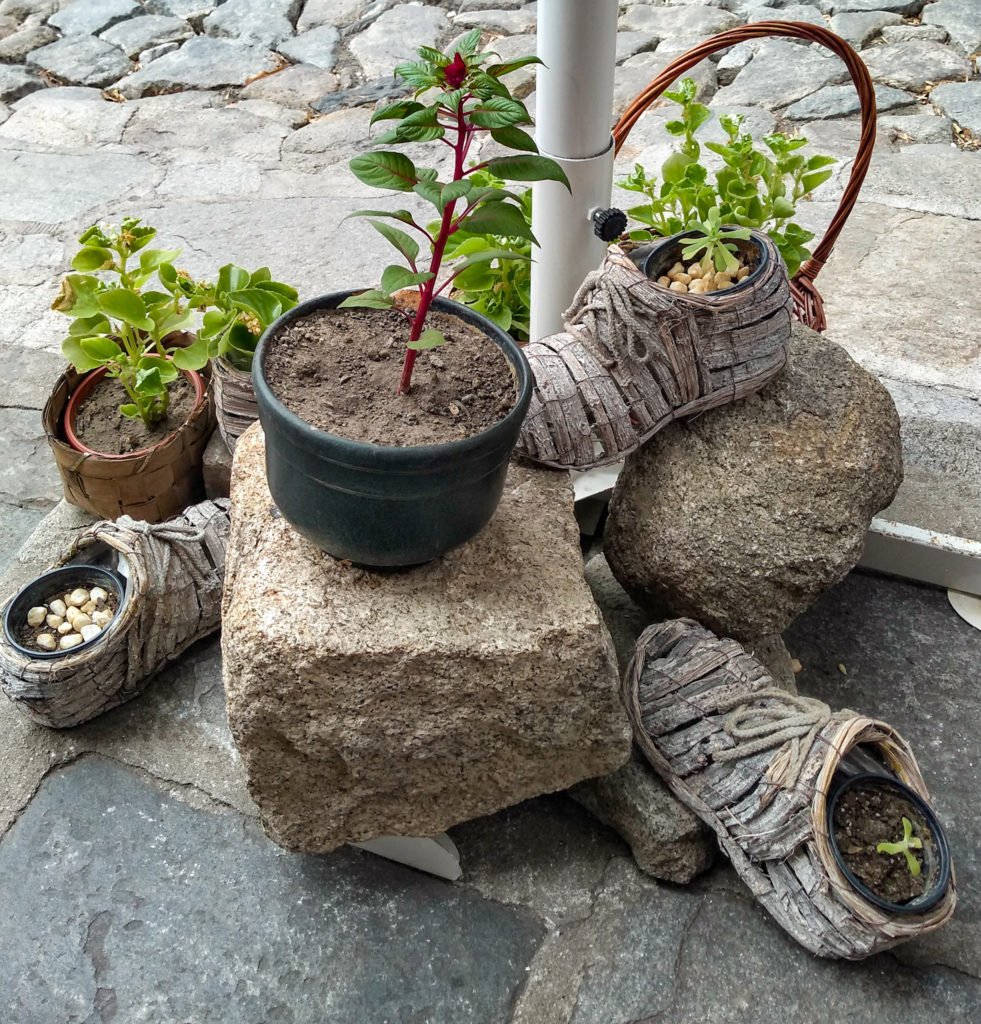
Roman Stadium
From the Old Town, we retraced our steps back down the hill to the bul.Tsar Boris III Obedinite. Back through the underpass, then a 4 min walk along ul. Zhelezarska to get to the Roman Stadium, or the Ancient Stadium of Philipopolis. The stadium is located in the centre of Plovdiv, under the main pedestrian street. The northern end of it can be observed from Dzhumaya Square, adjacent to Dzhumaya Mosque.The 30000 spectator seats are tiered in 14 rows. Being made of solid marble blocks (40 cm high and 75 cm wide).
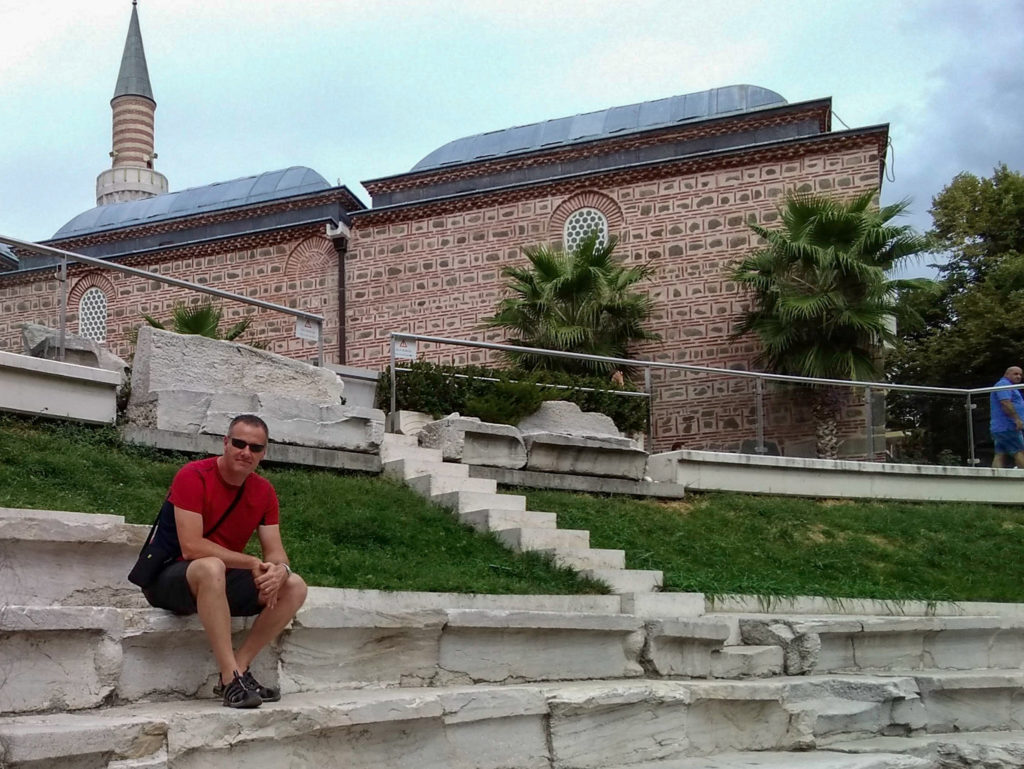
The Clock Tower
Located on Danov’s hill is the Clock Tower. Easily reached from the Roman Stadium on foot only being a 5 min walk. The Tower dates from 1623. A new clock, made in Vienna, was installed in 1883.
Stefan Stambolov Square
Going back down the hill, we took the 6 min walk to Stefan Stambolov Square. A square that is surrounded by cafes, restaurants and shops, all overlooking a central fountain.
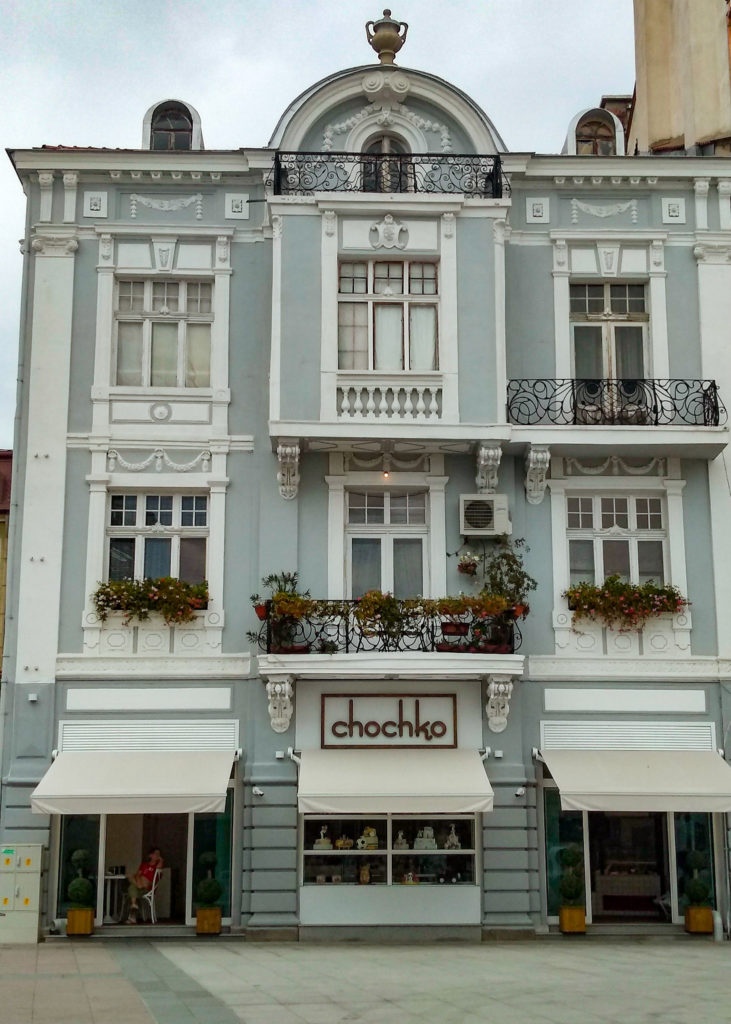
In front of the square is the Municipality building of Plovdiv, with its exquisitely decorated facade in the classic Neo-Baroque style.
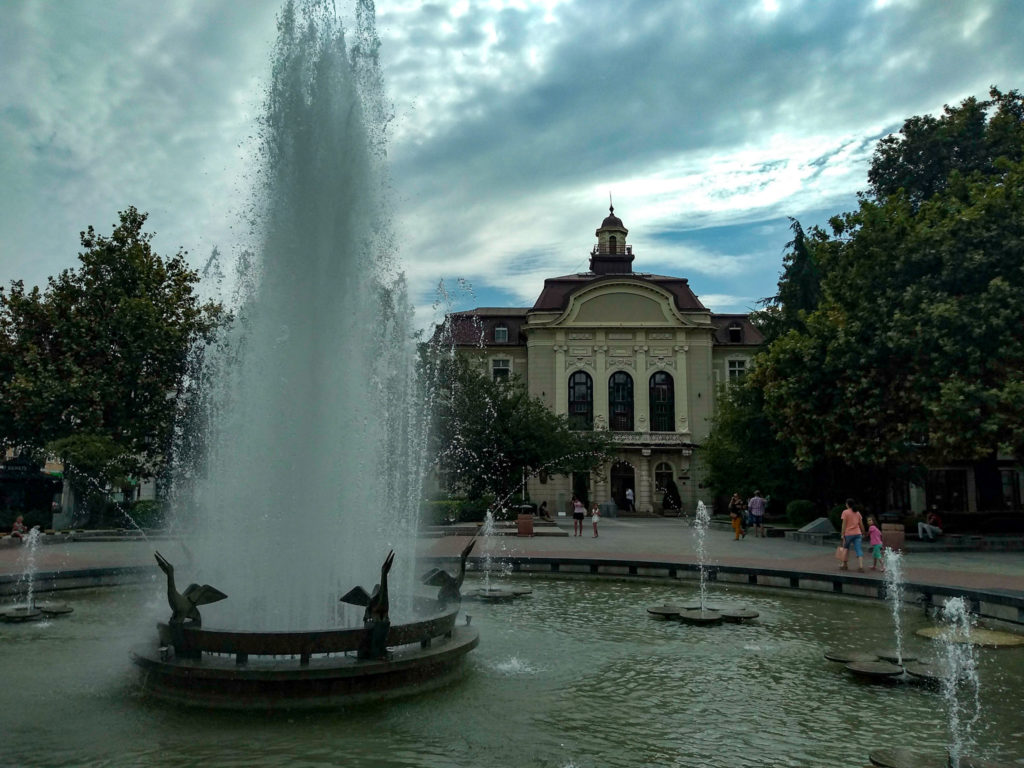
The Roman Forum ( Ancient Philippopolis)
From the square it’s a 5 min walk down the pedestrian precinct to the Central Post Office. An imposing building from the Soviet Bloc days. Just another priceless monument added to the other historical monuments of Plovdiv. Behind the post office lies The Roman Forum. The ancient city and its main street being located at the very heart of Plovdiv’s modern city centre and main pedestrian area. Ruins of several ancient administrative buildings are clearly visible amongst the remains.
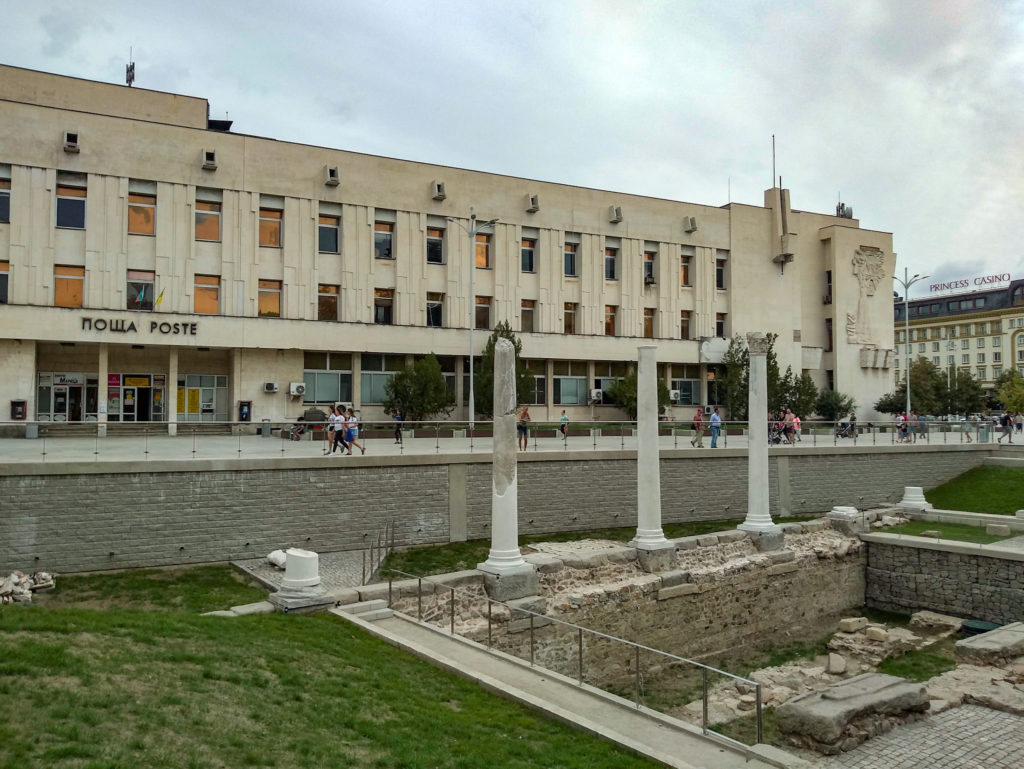
The Singing Fountains
With the Central Post Office building on the left, to the right is Tsar Simeon’s Gardens. This is where the Singing Fountains can be found. The Fountain’s special dance, a spectacular show with music and light can be seen every Thursday, Friday and Saturday evening at 21:30 hrs.
Getting around
Plovdiv doesn’t have a metro system or a network of trams or trolleybuses. Buses are pretty much the only available public transport in the city. The bus routes are widespread covering most of the city. This makes getting around quite easy.
Google Maps or the Moovit app are probably the best to plan live journeys. Both give bus numbers and timings. Reading the display boards isn’t an option, as they show the bus destination in the cryillic alphabet. Tickets available from on board conductors at a cost of 1 Bulgarian Lev per person per journey.
